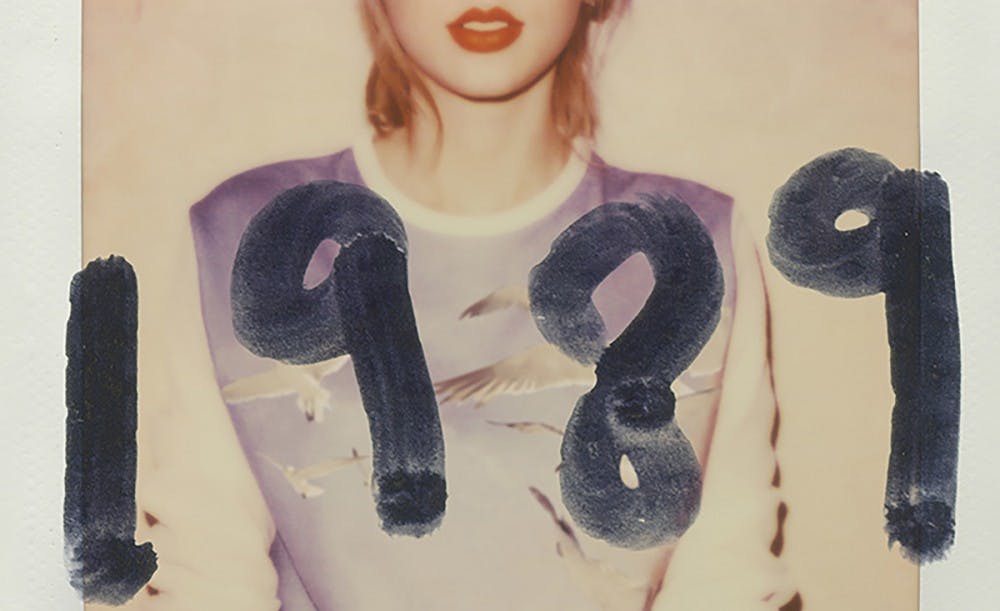Taylor Swift’s fifth album breaks dramatically from her previous work. She consciously made a definitive creative shift from the country genre to pop, a risky career move considering the tight-knit nature of the country music community and its reliable listener base. This move seems thus far not to have worked against her—the New York Times reported that her album sales are likely to surpass one million copies. This defied pre-release expectations and puts Swift in the record-breaking position of perhaps being the first artist to produce three consecutive albums to go platinum in their first week. Whether this dramatic success is due to her undiminished star power, dedicated fan base, refusal to release the album on outlets like Spotify and YouTube or genius pre-release marketing strategies, 1989 seems likely to seal her position in the pop legend pantheon.
Swift certainly delivers on the promise of a pop album, named for the year of her birth and for being the era of her current major musical influences. She turns from her signature acoustic guitar good girl formula to a synth- and production- heavy sound. Swift retains almost none of the twang and innocent lightness that defined “Fearless” and “Red,” though the lyrical subject matter still evokes her carefree, starry-eyed romanticism. This could be off-putting to some fans, for it is undeniable that a large part of Swift’s charm is the catchy, relatable, almost impossible-not-to-like songs like “22” and “We Are Never Ever Getting Back Together.”
Songs on 1989 are decidedly less upbeat and anthemic; Swift seems instead to be edging on the brooding, lower-toned style that has worked so well for some of her peers. For example, when I first heard “Wildest Dreams,” I almost thought Lana Del Ray had made a guest appearance. The split-melody altos and damp vocals that drive this song are plucked almost directly from Lana’s “Born To Die”—but, unfortunately, the copycat can’t touch the original.
The majority of this album’s songs are still undeniably Taylor, even if they don’t sound like her at first listen. “Welcome to New York” brings out the theme of a classic small-town girl finally hitting it big (even though she made it big a long time ago), calling New York a place where “you can want who you want/Boys and boys, and girls and girls.” Her acoustic strumming reappears in “How You Get the Girl,” layered over the mid-80’s sound she’s striving for. These new combinations are surprisingly fresh and successful.
“Clean,” the album’s finale, is easily the best song on it. It epitomizes the sound and feel she’s aiming for, balancing Swift’s belting chorus with Imogen Heap’s softly ethereal synth. Although a surprising combination, seeing how far apart these two are aesthetically, it totally works.
The album has a few overdone and disappointing skippables. “I Wish You Would” and “All You Had to Do Was Stay” are both overproduced, with elements like high-pitched one-word yelps, snaps and lurches in tempo that irritatingly beat at the listener’s eardrums. Every album has its low points, though, and Swift at least gets credit for trying to reach into new stylistic territory.
1989 is no Red, but it’s as fun, sincere and enthusiastic as any of Swift’s other work, and this makes it worth a listen. I’d be remiss not to mention the weird yet deeply fabulous single “Shake It Off” that shows up midway through the album, in which a little hip-shaking is irresistable. “Haters gonna hate” indeed, Taylor—regardless of what critics may say about her straying too far from her signature style, with 1989, she breaks out of her comfort zone and hardly “misses a beat.”
Get The Chronicle straight to your inbox
Signup for our weekly newsletter. Cancel at any time.

